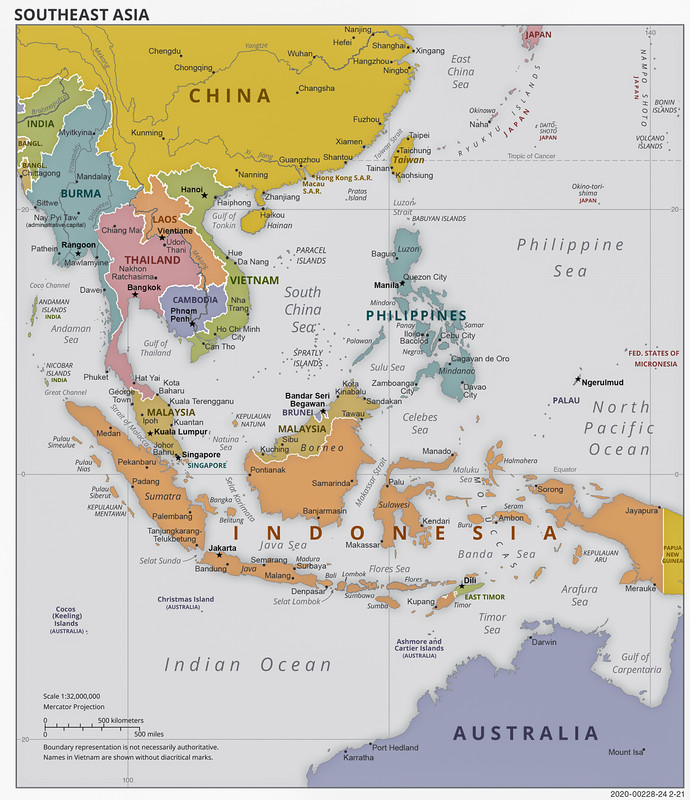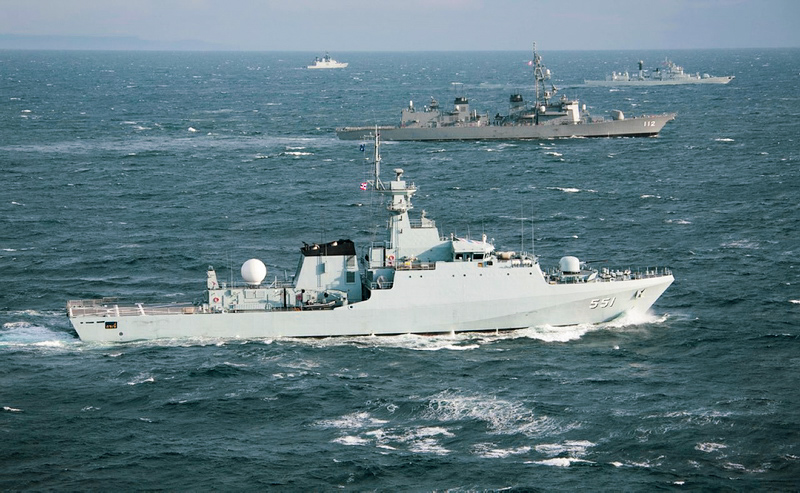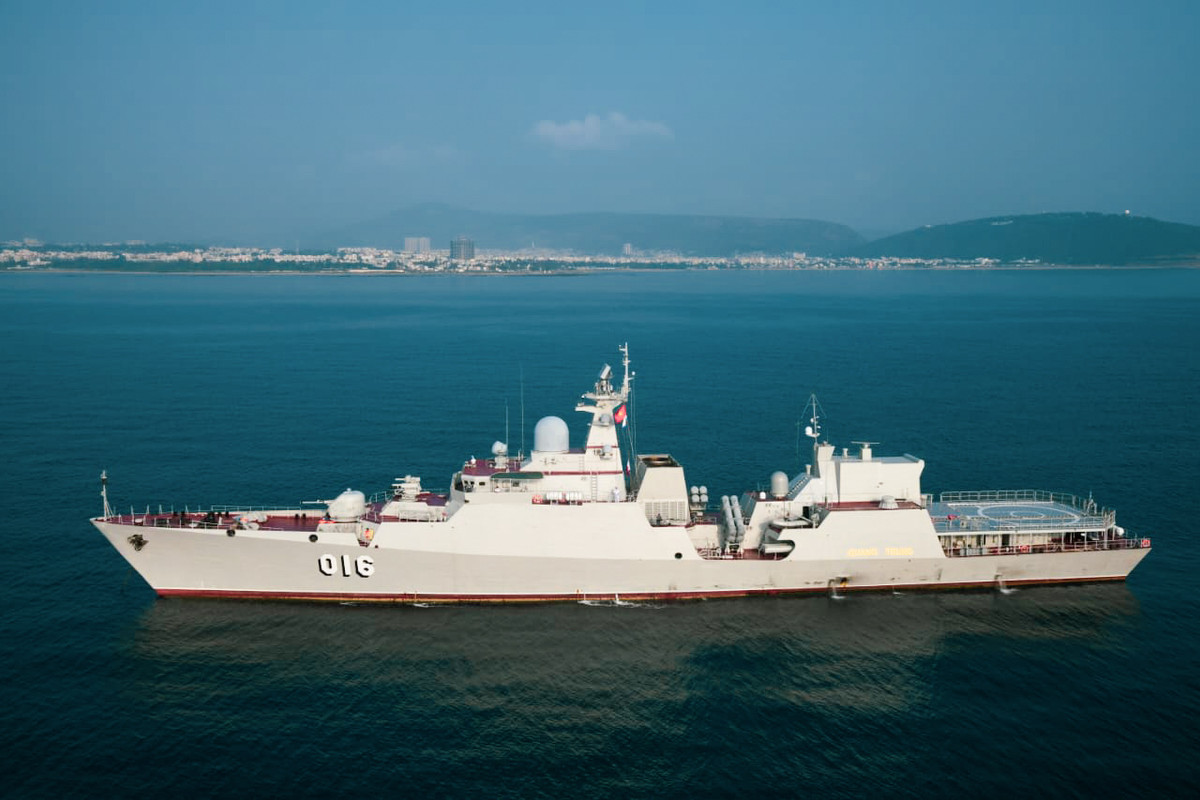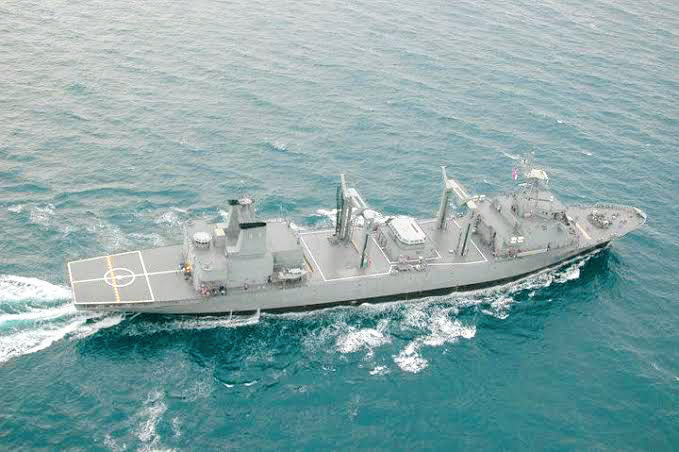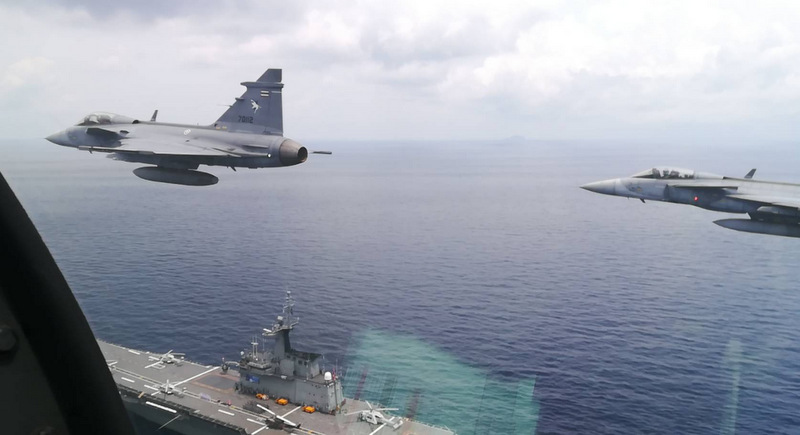- May 4, 2021
- 3,615

Title: Operation Guardian Harmony
Document Number: RTAF-GUDHM-001/2003
Classification: Public
Security Level: NSST Protocol
Date: May 10, 2003
XI. IntroductionX
Background
Complying with the national law of Thailand, Southeast Asia's Security and Stability Act, B.E. 2546 (2003), the Thai Government has deemed it necessary to establish a vigilant surveillance system of the Southeast Asia (SEA) waters. With the 1st and 2nd Patrol Squadrons (PS1 and PS2) of the Republic Thai Navy Coast Guard already maintaining a routine, the Thai Government has authorized the deployment of the 3rd Patrol Squadron (PS3). The PS3 has been assigned a task that will be an essential part of any personnel serving in the Coast Guard. In the context of the Western attempt to intervene in the SEA region, which is a direct affront to Thai national law, Operation Guard Harmony marked its inception.
Objective
Operation Guardian Harmony was built on a platform of Southeast Asia's Security and Stability Act, B.E. 2545 (2002), which positioned Thailand as the regional leader and guarantor. The main objective of this operation is the patrolling of the entirety of SEA waters. This goal is supplemented by the following commitment:
1. The support of democratic and peaceful solutions to disputes within the region and the maintenance of the status quo
2. The assurance of the nations of Southeast Asia to be free from interference and be independent, whether it is from another country inside or outside the region.
3. The prioritization of diplomatic efforts and dialogue with regional partners to resolve disputes, address security challenges, and enhance cooperation among Southeast Asian nations.
4. The recognition of the importance of regional organizations and forums in promoting security, stability, and cooperation among Southeast Asian nations.
5. The acknowledgment and address of the increasing significance of non-traditional security threats, including but not limited to transnational crimes, terrorism, climate change, and pandemics, which have far-reaching implications for the security, stability, and prosperity of Southeast Asia
6. The recognition and support of the vital role of economic cooperation and development in fostering stability, prosperity, and resilience among Southeast Asian nations.
7. The acknowledgment of the importance of regional solidarity and support in providing humanitarian assistance and disaster relief to Southeast Asian nations affected by natural disasters or humanitarian crises.
8. The commitment to promoting human rights, democracy, and the rule of law within Southeast Asia, recognizing their importance in ensuring peace, stability, and prosperity in the region.
9. The recognition of its responsibility to protect the people of Southeast Asia from persistent atrocities committed by a state that shows no willingness to cease such actions.
XII. Command and ControlX
2.1 Guidance
This operation is conducted under the guidance of the Defense Minister, Sutin Klungsang, and approval from Prime Minister Thaksin Shinawatra.
XIII. Operational ForcesX
The Republic Thai Navy Coast Guard Fleet
- Naval Patrolling Group One (NPG1)
- [5] Krabi-class Offshore Patrol Vessel
- 225 Crews
- HTMS Krabi
- HTMS Khao Phanom
- HTMS Ko Lanta
- HTMS Khlong Thom
- HTMS Ao Luek
- RTNAF 301 Squadron
- 25 Crews
- [5] Kamov-KA226
- 25 Crews
- 225 Crews
- [9] Naresuan-class Frigate
- 1,350 Crews
- HTMS Loe Thai
- HTMS Phraya Duangthip
- HTMS Phraya Chaiwong HTMS Phraya Khattiya
- HTMS Phraya Noi-in
- HTMS Prince Worayanrangsi
- HTMS Prince Phrommaphipong Thada
- HTMS Prince Norananthachai Chawalit
- HTMS Prince Boonwat Wongmanit
- 1,350 Crews
- [1] Chakri Narubet-class light aircraft carrier
- 601 Crews
- HTMS Suphannaphum Narubet
- RTNAF Squadron 507
- 240 Crews
- [24] Eurocopter
- 240 Crews
- 601 Crews
- [5] Krabi-class Offshore Patrol Vessel
- Naval Patrolling Group Two (NPG2)
- [20] Pattani-class Offshore Patrol Vessel (OPV)
- 1,680 Crews
- HTMS Kapho
- HTMS Mae Lan
- HTMS Yala
- HTMS Betong
- HTMS Bannang Sata
- HTMS Than To
- HTMS Yaha
- HTMS Raman
- HTMS Kabang
- HTMS Krong Pinang
- HTMS Narathiwat
- HTMS Tak Bai
- HTMS Bacho
- HTMS Yi-ngo
- HTMS Ra-ngae
- HTMS Rueso
- HTMS Si Sakhon
- HTMS Waeng
- HTMS Sukhirin
- HTMS Su-ngai Kolok
- 1,680 Crews
- [20] Pattani-class Offshore Patrol Vessel (OPV)
- Logistic Support Squadron Two (LSS2)
- [2] Similan-class Replenishment Tanker (Type 908)
- 314 Crews
- HTMS Huyong
- HTMS Surin Nuea
- 314 Crews
- [2] Similan-class Replenishment Tanker (Type 908)
XIV. ExecutionX
4.1 Initial Deployment
All personnel will be reported to the respective base with all necessary equipment per the Defense Ministry documents.
4.2 Communication
Effective communication among all the units must be maintained. Any unidentified or suspicious activity must be reported to the command center immediately.
4.3 Rules of Engagement
Engagement will be per the established Rule of Engagement (ROE) with the application of Increased Vigilance (IVG) and international laws. The use of force must be proportionate, and only used in self-defense or to deter identified threats after all non-lethal methods have been exhausted.
4.4 Support
Logistic support, including fuel, supplies, and maintenance, will be provided by the respective naval bases.
XV. CoordinationX
5.1 Inter-agency
Liaise with maritime agencies such as the Navy, Coast Guard, and Air Force to ensure maximum coverage and sharing of intelligence.
5.2 International
In case any foreign vessels or units are involved, contact must be established with the respective embassies or consulates and the situation must be reported to the Ministry of Foreign Affairs.
XVI. ConclusionX
The Defense Ministry has mobilized all necessary resources for the deployment of PS3 in Operation Guardian Harmony. The Defense Ministry expects that its contribution will represent Thailand's role as a regional leader dedicated to peace, stability, and cooperation in Southeast Asia
[Signature]
Sutin Klungsang
Defence Minister
[Signature]
Thaksin Shinawatra
Prime Minister, Republic of Thailand
Document Clearance:
The Office of the Prime Minister
The Ministry of Foreign Affairs
The National Intelligence Agency
The Republic Thai Air Force Command Center
The Republic Thai Navy Command Center
The Republic Thai Armed Forces Special Warfare & Operation Command
Distribution List:
The Office of the Prime Minister
The Ministry of Foreign Affairs
The National Intelligence Agency
The Republic Thai Air Force Command Center
The Republic Thai Navy Command Center
The Republic Thai Police
The Republic Armed Forces Headquarters
The Republic Thai Air Defense Command
The Naval Special Warfare Command
The Air Force Security Force Command
Last edited:



